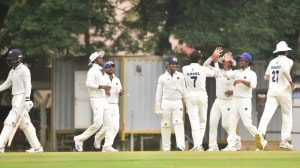Swinging Both Ways
For 56-year-old Ramesh Nagvekar, buying a branded computer last year was a dream come true. His son was headed for engineering college and N...

For 56-year-old Ramesh Nagvekar, buying a branded computer last year was a dream come true. His son was headed for engineering college and Nagvekar wanted his own PC. ‘‘Buying that PC was just the beginning of trouble for me,’’ he says today. Priced at around Rs 68,900, the slick machine came with its own problems. ‘‘The whole system would crash, and whenever I called their service centres, they would not answer,’’ he says.
Finally Nagvekar did what a majority of us do… He bought a PC from the assembler. And why not! After all, he got a spanking new assembled machine complete with scanner and a black and white printer for just Rs 55,000. It’s a telling trend.
Despite the price sensitivity of the branded PC market, Indian consumers are still opting for their cheaper, non-branded assembled counterparts.
Points out Rishi Ghai, an analyst at IDC: ‘‘As far as assemblers are concerned, their stronghold in the market continues unabated.” Ghai pegs the assemblers community’s share at a whopping 70.5 per cent in the desktop segment in the first quarter of 2003.
Even with the competition hotting up between the branded vendors and their humbler put-it-together rivals, the assemblers maintained their prices 16 per cent lower than their branded counterparts.
According to a combined study by the apex hardware body, MAIT with research firm IMRB, in the year 1999-2000 nearly 29 per cent of households were willing to invest in a PC. Of these, 64 per cent of them said they would prefer the branded PC over its assembled counterpart. However, subsequent studies indicated that though the preference for branded PCs was high, when time came to put down the money, consumers ended up buying the cheaper assembled PCs. To counter this threat, the branded PC players have slashed their prices dramatically.
According to IDC figures, the fall in the price of an average Pentium III PC between 2001 and 2002 has been something around 26 per cent. In case of a Pentium4 PC, the fall is around 14.6 per cent.
Adds Raj Saraf of Zenith Computers, ‘‘The price of an average Zenith computer falls by almost 30 per cent every year.’’ The latest launch by Zenith — the VMUL series — is priced at Rs 32,500. And the drop in the prices have helped the computer market grow by a whopping 20 per cent year-on-year.
The price-drop primarily rides on a couple of reasons. Firstly, it is the fast rate of technological obsolescence in the computer hardware (read microprocessors). And two, because of the marketing strategy of most of the hardware vendors to expand their customer-base and generate high volumes, by tapping price-sensitive B and C class cities.
Apart from the fall in price, marketers are also looking at other ways to keep customers coming. Primary among them is bundling products, so now with a PC one can virtually get a printer or a scanner free.
But Saraf believes that the grey market still eats up almost 60 per cent of the PC market. But have the falling prices, which failed to restrict the growth of the assembler market, helped PC shipment? Yes, believe industry experts. But the growth will come from smaller towns.



- 01
- 02
- 03
- 04
- 05




























